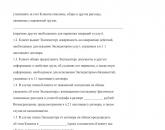Book: Kotelkin S.V. "International Finance: Textbook
S. V. Kotelkin. International financial system: Textbook. M.: Economist, 2004. - 541 p.
Let's start with a historical preamble. Thus, the well-known English politician Sir Winston Churchill, who proclaimed an "iron curtain" between the West and the USSR1, started his career as a statesman-financier. Serving as "Lord Chancellor of Her Majesty's Exchequer" (Minister of the Exchequer), he restored in 1926 the gold standard in the United Kingdom on pre-war terms. Detractors called this deflationary measure a precursor to the Great Crash of 1929, while supporters emphasized its stabilizing effect on the pound. As Prime Minister, on September 28, 1949, in the House of Commons, he uttered a sarcastic phrase in a polemic: "There is no such sphere of human knowledge in which it would be easier to show high intelligence and super-wisdom than when discussing issues of currency and exchanges."
This phrase served as an epigraph to the textbook under discussion, and the words from it were included in the title of this review. Moreover, this was done on the principle of movement from the opposite, since, in our opinion, monetary and financial problems are among the most complex in financial theory and management practice. Thus, international finance is called one of the most advanced (“sophisticated”, from English zo/N1ca1; esC - sophisticated) areas of economics and management, since they use literally thousands of different tools.
Therefore, close attention to this area on the part of domestic scientists and practitioners is respected. Before us is one of the attempts of a professional and conscientious study of “currency and exchange issues” and presenting it in the form of an educational publication that promises to become a useful source for both analysts and decision makers (a kind of “handbook” for managers, financiers , international specialists). The textbook was written by a professor at the Department of Theory of Finance, Faculty of Management, St. Petersburg State University. Publication approved by the Ministry of Education Russian Federation as a textbook for students of higher educational institutions. The reviewers were well-known experts - Doctors of Economics, Professors V. V. Kovalev (St. Petersburg State University), I. N. Platonova (Financial Academy under the Government of the Russian Federation), V. S. Torkanovskiy (St. State University economics and finance).
The textbook is dedicated to current topics. Thus, a large number of Russian economic entities carry out foreign economic operations related to the movement cash flows in various currencies. Hence the importance of considering international
native financial issues in regular training courses. The presented textbook is designed for the audience in which the course "International Finance" (or, in Russian terminology, "International Monetary and Credit Relations") should be read.
The structure of the textbook is logical. Thus, the financial system (national, international) consists of three elements - money, financial markets and institutions. Accordingly, in section 1 (“International money”) of the textbook, the functions and types of international money, the evolution of the world monetary system, and the determinants of exchange rates are considered. Section 2 (“International currency markets”) discusses the structure of world financial markets, characterizes the forex market, spot currency exchange transactions, as well as currency derivatives (“derivatives”) - forwards, futures, options, swap contracts for foreign currency. Section 3 (“International money and capital markets”) is devoted to the characteristics of tradable valuable papers(bills, bonds, shares) and non-negotiable loans, deposits, as well as indicators of their behavior. Section 5 of the textbook (“International Financial Institutions”) provides an overview of the functions and types of private financial intermediaries, international financial public (official) institutions, international financial regulation and innovation. Finally, the basic concepts in international finance are discussed in the three chapters of Section 4 (“Parity Conditions in Monetary Markets and Fundamentals of Currency Forecasting”), as well as in Chapter 11 of Section 5 (“International Portfolio Investment”).
Indeed, all the sophistication of foreign exchange transactions is based on several basic concepts3. These concepts are used in their behavior by both financial speculators (the so-called "professionals" of the market) and financial managers industrial and trading companies, financial institutions (banks, insurance companies, pension funds), government (federal, municipal) agencies (ministries of finance, central banks, tax, customs services, finance committees), as well as individuals (individuals)4.
The structure of each chapter is standardized - its text is preceded by a list of goals, detailed content. The chapter consists of paragraphs, subparagraphs, paragraphs. The chapter is completed by brief conclusions (results), questions for self-examination, problems for discussion, tasks, applications. In general, the standardization of the logic and structure of the textbook looks like its undoubted advantage in terms of unifying the requirements for students in Russian universities with the corresponding requirements in universities in developed countries.
The material is presented in a good language, it looks quite reasonable to use a large number of actual examples that precede the discussion of complex technical issues. At the same time, the empirical material (graphs, diagrams, tables, citations of articles, official documents), illustrating literally every concept or theoretical reasoning, looks quite dosed.
At the same time, along with the noted advantages, I would like to express a number of critical remarks. So, in part one, among the types of modern international money, monetary gold is given, which is rather a highly liquid asset that is part of official reserves. In addition, exchange rate factors are presented in terms of a “flow of funds”, while alternative approach"from the standpoint of assets" is only mentioned. Also, a number of important mathematical and financial concepts (Dornbusch-Fischer, Mundell-Fleming models, the theory of real options) have not been reflected.
zheniya in the textbook. Consideration of the main international financial institutions in the final, and not in the initial, chapters also looks indisputable. Obviously, some of the illustrative examples overload the text.
However, this does not interfere with the integrity of the perception of the described problems and does not reduce the high rating of the presented textbook. The author consistently and logically describes the required material for the above regular basic training course. The text follows the established traditions (Russian and Western) in the presentation of the relevant material, and also contains a certain novelty and independence, being a valuable source for studying the complex and urgent problems of international finance.
The final phrase from the introduction of the textbook sounds very responsible - “it is unconditional that all the shortcomings (both substantive and formal) that can be found in the text of the textbook should be attributed solely to the author” (p. 9)5. It testifies to the professional responsibility of S. V. Kotelkin, which characterizes his attitude to his publications and to the names of those respected specialists that he mentioned in the Introduction.
In general, the author succeeded in presenting in an accessible form the complex and voluminous material of an important systematic training course, and we believe that readers of the textbook will find interesting reading useful for analytical and practical purposes.
1 He did this while delivering a speech in 1946 in the town of Fulton (Missouri, not far from the residence of the then US President G. Truman).
2 Note that history repeats itself. In Russia after 1998, opponents of the "currency corridor" regarded it as the cause of the default, while supporters emphasized its stabilizing anti-inflationary effect.
3 This is often seen as an element of similarity between international finance and modern physics. So, both disciplines are, on the one hand, practice-oriented branches of knowledge, and on the other hand, their fundamental theoretical parts (despite their “sophistication”) are based on a number of fairly simple, even intuitive, concepts. For example, for physics, these are several ideas of A. Einstein (which, according to their creator, “can be expressed in words”) and several postulates of N. Bohr.
4 Even if they (in the manner of one of Moliere's heroes) do not suspect it.
5 Kotelkin SV International financial system. M., 2004. S. 9.
V. V. Ivanov,
Doctor of Economics Sciences, Prof., Head of the Department of Credit Theory and financial management St. Petersburg State University
To narrow the search results, you can refine the query by specifying the fields to search on. The list of fields is presented above. For example:
You can search across multiple fields at the same time:
logical operators
The default operator is AND.
Operator AND means that the document must match all the elements in the group:
research development
Operator OR means that the document must match one of the values in the group:
study OR development
Operator NOT excludes documents containing this element:
study NOT development
Search type
When writing a query, you can specify the way in which the phrase will be searched. Four methods are supported: search based on morphology, without morphology, search for a prefix, search for a phrase.
By default, the search is based on morphology.
To search without morphology, it is enough to put the "dollar" sign before the words in the phrase:
$ study $ development
To search for a prefix, you need to put an asterisk after the query:
study *
To search for a phrase, you need to enclose the query in double quotes:
" research and development "
Search by synonyms
To include synonyms of a word in the search results, put a hash mark " #
" before a word or before an expression in brackets.
When applied to one word, up to three synonyms will be found for it.
When applied to a parenthesized expression, a synonym will be added to each word if one was found.
Not compatible with no-morphology, prefix, or phrase searches.
# study
grouping
Parentheses are used to group search phrases. This allows you to control the boolean logic of the request.
For example, you need to make a request: find documents whose author is Ivanov or Petrov, and the title contains the words research or development:
Approximate search words
For an approximate search, you need to put a tilde " ~ " at the end of a word in a phrase. For example:
bromine ~
The search will find words such as "bromine", "rum", "prom", etc.
You can additionally specify maximum amount possible edits: 0, 1 or 2. For example:
bromine ~1
The default is 2 edits.
Proximity criterion
To search by proximity, you need to put a tilde " ~ " at the end of a phrase. For example, to find documents with the words research and development within 2 words, use the following query:
" research development "~2
Expression relevance
To change the relevance of individual expressions in the search, use the sign " ^
" at the end of an expression, and then indicate the level of relevance of this expression in relation to the others.
The higher the level, the more relevant the given expression.
For example, in this expression, the word "research" is four times more relevant than the word "development":
study ^4 development
By default, the level is 1. Valid values are a positive real number.
Search within an interval
To specify the interval in which the value of some field should be, you should specify the boundary values in brackets, separated by the operator TO.
A lexicographic sort will be performed.
Such a query will return results with the author starting from Ivanov and ending with Petrov, but Ivanov and Petrov will not be included in the result.
To include a value in an interval, use square brackets. Use curly braces to escape a value.
Finance Public finance: International finance State budget Federal budget Municipal budget Private finance: Corporate finance Household finance Financial markets: Money market Currency market Stock market Derivatives market ... Wikipedia
Budget deficit- (Deficit budget) The concept of budget deficit, types of budget deficit The concept of budget deficit, types of budget deficit, government borrowing Content Content Sources of financing the budget deficit Internal sources External ... ... Encyclopedia of the investor
Financial markets Securities market Bond market Government bond ... Wikipedia
The exchange rate regime is the system for forming the proportions of the exchange of national currency for foreign ones; varies from a rigid peg, for example, to gold (the gold standard), to a free floating rate, when c ... Wikipedia
Dumping- (Dumping) The concept of dumping, price dumping, currency dumping Information about the concept of dumping, price dumping, currency dumping Content Content as a phenomenon and its characteristics Anti-dumping participants GATT GATT and National Legislation… … Encyclopedia of the investor
Compiled on the basis of the reference book by S. D. Miliband “Orientalists of Russia” (in 2 vols. M .: East Lit., 2008) The list, as a rule, does not include translators of Japanese literature (except when the translation is accompanied by a commentary and has ... ... Wikipedia
Dmitry Alexandrovich Endovitsky Date of birth: December 3, 1970 (1970 12 03) (42 years old) Place of birth: Voronezh, USSR Country ... Wikipedia
Foreign currency ruble foreign currency in ruble terms, a conventional monetary unit used in foreign economic settlements, as well as foreign currency in accounts denominated in rubles. The term used in the Soviet ... ... Wikipedia
Gross domestic product- (Gross domestic product, GDP) Definition of GDP, history of origin and calculation methods Information about the definition of GDP, history of origin and methods of calculation
Popular
- Drinking water bottling business
- Sales agent job description
- Ready-made business plan for opening an insurance agency from scratch
- How can I open an IP for apartment renovation?
- Statistical reporting 1 type annual deadline
- How small business reports to Rosstat
- What new business ideas have appeared in Russia from Europe and the USA (America)?
- Features of the production of plastic bags
- Foreign trade balance (trade balance) How is a country's foreign trade balance measured?
- Ready business plan for a beauty salon




